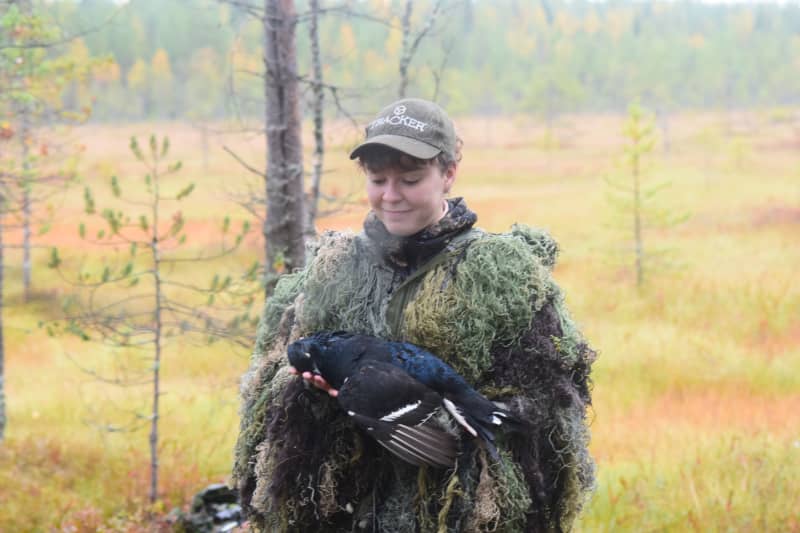Veera Kivistö decided to reduce her meat consumption and became a vegetarian who sometimes eats game. In general, cutting meat consumption in half would be a good goal for every Finn.
Asking for one’s own food is emotional and emotions come to the surface even in a shooting situation.
– When you get to the prey, you feel gratitude and respect for that animal. I have a way of thanking Mother Nature for calling me a catch and giving me the situation and the opportunity to succeed, Kivistö says.
He describes himself as a game vegan: if he eats meat, it is exclusively game meat or responsible fish, such as Finnish roach.
– The main emphasis in the food is on vegetarian and vegan food, but I prefer to add game that I have caught myself as a spice from time to time. Even what my father asks is fine.
Game meat is not automatically a climate change
Veera Kivistö chose vegetarian food at the age of 15, but game remained on the table thanks to the hobby of her father and brother.
Five years ago, milk and eggs were excluded from the diet. The main reason for reducing meat consumption is concern about the climate.
– In the Finnish diet, meat and dairy products account for 65 percent of the climate impact, and even in such a diet, they have been reduced to very little.
However, Koistinen reminds that switching to game food does not automatically guarantee that the climate will win. Koistinen says that driving, which is often part of hunting, can increase the carbon footprint of game meat significantly.
According to Koistinen, hunting also involves other environmentally questionable features, such as feeding game with grain.
\”Having meat consumption in half would be a good goal\”
The game veganism chosen by Kivistö is not possible for everyone. Not everyone has the opportunity to even try to get their own food by hunting, and there simply wouldn’t be enough game to replace our current meat consumption, not even close.
Mari Koistinen reminds that it is more important to think about reducing the consumption of intensively produced meat.
– Finns currently eat around 80 kilos of bone-in, i.e. uncooked, meat per year. If we wanted to reach a suitable level from an environmental point of view, then halving it would be a very good goal.

In Veera Kivistö’s opinion, exceptions can also be accommodated in the game vegan diet.
– The main point and the most important thing for me is what you eat on a daily basis. If you eat Christmas candies at Christmas like I do, and otherwise eat according to your diet, you won’t destroy the world, Kivistö sums up.
New hunters bring new culture
Kivistö completed his hunting license at the age of 18. Now, seven years later, he has shot game from moose to small game. Kivistö talks about his life, for example, on his Instagram account.
In social media, Kivistö has received feedback from, among others, many people who follow a similar diet.
– Many have said that they have left the produced meat on the shelf and hunt and thus obtain the meat they eat.
Most of the time, the feedback is positive, but there have also been complaints from meat producers, for example.

However, according to the Mätsätäjäliitto, young hunters like Kivistö bring new values \u200b\u200bto the hunting culture.
Kivistö is attracted to forests and swamps by the opportunity to get food from nature. Cranberries and funnel wafers are also collected from the edge of the tea swamp.
– What drives me in this hobby and in many other hobbies is the idea that you can get food from nature for free. It has always fascinated me a lot.

